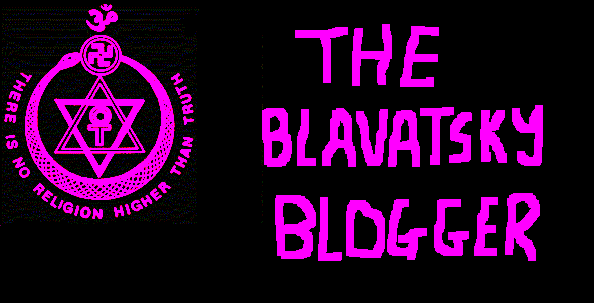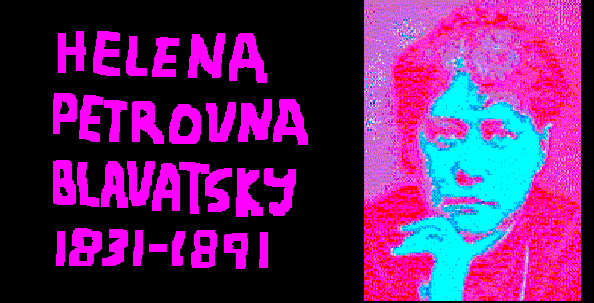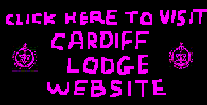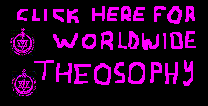Blavatsky Blogger

Taking Theosophical
ideas
into the 21st
century

Our
Physical Body
Servant
or Master?
Shifting
the Centre of Gravity from the Physical Body
to
the Consciousness is a major empowerment.
In
“Gods in Exile”, J J Van Der Leeuw goes further
by
postulating that control of the Mental Body through
the
imagination is essential in making our sure that
our
Physical Body is our servant.
Posted
The
Physical Body is a vehicle for your consciousness and one of the several bodies
which you have for the duration of your physical life. It makes sense to see to
it that your physical body knows its place as your servant or instrument for
dealing with your life rather than the other way round.
Below are
extract for J J Van Der Leeuw’s “Gods in Exile” in which describes the problems
which arise when the Physical Body is in charge. He advocates a change in
attitude as the first step in achieving mastery.
“By
identifying ourselves with the physical body, or its subtler counterpart the
etheric body, we make ourselves subservient to their desires and their
conditions of existence; consequently our body responds to every change of
circumstances to which it is subjected and it follows its own
way
instead of ours. The result is weakness and ill-health, and a certain heaviness
or dullness in the body which makes it unable to respond to the Self
within.
The Change
in the Physical Body
All that
changes when we overcome the illusion of being the body and see it as just what
it is, as our servant or instrument in the physical world. We must, as it were,
change the polarity of the whole relation; instead of the physical world
dominating us through the physical body with which we have
identified
ourselves, we must control the physical world through the physical body which
we have made subservient to ourselves. The centre of gravity must be shifted
from the physical body to the consciousness which is ours, we must as it
were feel
that we withdraw the centre of our consciousness and feel ourselves standing
behind and working through the physical body, not one with it. The result
produced by this change of attitude towards the physical body is profound; as
small particles of iron filings group themselves round one common centre when a
magnet is brought near, and become all arrayed along the
lines of
force in the magnetic field thus caused, even so the particles of the etheric
and physical bodies, instead of being chaotic and aimless and subject to any
chance influence from without, become subservient to the one controlling
influence
of the will within. We must feel them like that, feel the change brought about
by our assertion that we are not the body but that the body is ours. We must
feel that henceforth it is vitality from within which nourishes and energizes
the etheric and physical bodies, more so than vitality from without. The entire
change is one which must be experienced and felt rather than
thought
about and discussed. We must feel our physical body becoming vibrant and
responsive to the consciousness within, subject to its laws and
conditions
rather than to those of the physical world around.”
_________________________
J J Van Der Leeuw goes on to outline how
our true self becomes entangled with the physical and other bodies to create
the illusion of what he termed “Separateness”:
“It is by
the identification of our true spiritual Self with the temporary bodies through
which the Self is manifest, that the illusion of our separate self is born. It
is as if the consciousness of the true Self or Ego were stretched downward into
the bodies and there got entangled and twisted in such a manner that it forms a
separate sphere of consciousness centered round the bodies to which it is thus
attached. But it is not a normal state, it is
distinctly
and essentially abnormal and unnatural.
As well
might we call it normal and natural if a band of India-rubber were to be pulled
down and
stretched
out in one particular spot and the extension thus formed be attached to some
fixed object. The attachment is abnormal and the moment it is disentangled from
that fixture it will resume its natural shape and the band of
rubber
will once again be one harmonious whole.
In like
manner we need only release our consciousness from the bodies to which we have
attached it. We need only surrender the illusion of separateness which we so
tenderly foster all
day long,
and the extension of consciousness, which forms the separate personality, will
naturally and automatically flow back into the greater Self
which we really are.”
______________________
J J Van Der Leeuw goes on to outline how control of the Mental
Body through imagination is the essential requirement in making the Physical
(and other) bodies our servant
“when
often repeated, thoughts set up a habit or custom and many a time we become
powerless to resist the thing we ourselves have created.
All that
would not be harmful if we determined our thought-images from with-in, if we,
the divine Self, made the image in full consciousness. The
danger,
the terrible danger to our entire life, lies in the fact that we allow the
creation of thought-images to be incited from without, that we allow stimuli
from the outside world to call up images in the mental body, to throw the
creative mental matter into thought-forms, charged with energy, which will
necessarily seek to discharge and thus realize themselves. In this ungoverned
activity of the mental body lies the source of practically all our inner
struggle and spiritual difficulties.”
_____________________
J J Van
Der Leeuw now gives a dire example of the possible effects of an uncontrolled
imagination
“The
Danger of an Undisciplined Imagination
Consider the
example of a man craving for drink. He knows the misery caused by his weakness,
he knows how it wastes his wages and starves his family, and, in his sane
moments, he determines to give it up. Now he passes a place in the street where
he can get drink, sees people go in and out and perhaps even smells the drink.
Up to that moment he is safe from temptation, safe from
struggle;
but what happens now? In that short fraction of a second he imagines himself
drinking; he makes a thought-image and for a moment lives and acts in that
thought-image of himself enjoying his drink. He feels how it satisfies his
craving, but in reality it has only increased it and made the ensuing action
almost unavoidable. Then, having created the image, he belatedly calls upon his
will and
says: "I do not want to do this thing." But then it is too late, then the struggle is
practically futile. Once the thought-image has been created,
realization
in action generally follows. Sometimes of course the image is not quite strong
enough and he succeeds in repressing it. But even then
there is
all the struggle and exhaustion of the bodies and the suffering which results.
The better way is to prevent the creative thought-image from being formed, to
intervene when intervention is still effective.”
__________________
This entry
contains only a tiny fragment of the methods and rationale contained in “Gods
in Exile”, which is effectively a comprehensive manual for inner work.
Strategies for control of the Mental and Astral-Emotional bodies are also
covered as well as the Physical. A link to the complete article is therefore
included.
Johannes
Jacobus Van Der Leeuw was a
member of the Liberal Catholic Church as well as a Theosophist and he makes
very skillful use of a considerable amount of Christian imagery to illustrate
Theosophical concepts.
______________________
The Blavatsky
Blogger
Taking Theosophical
ideas
into the 21st
century
__________________________
Postings
to this Website reflect
the
views of The Blavatsky Blogger.
Please
don’t go looking for anyone else.

